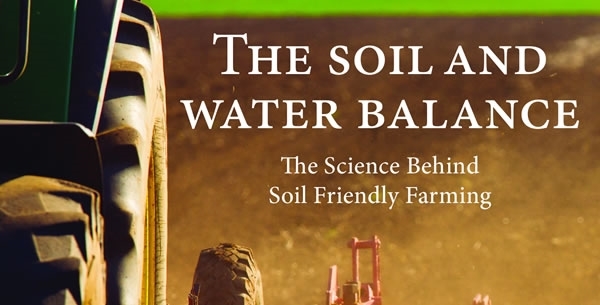
By Chris Stoate, Allerton Project Head of Research
If we felt we had got to know our local farming community fairly well over the past 25 years of the Allerton Project's existence, that process has stepped up a gear in the last couple of years through our shared interest in soil.
A dozen farmers recently met at Loddington as part of our Soil Biology and Soil Health project with AHDB, led by Elizabeth Stockdale at NIAB. 'Health' assumes life, and this project explores the relationship between life in soils and farm production.
Several other farmers expressed regret at being unable to attend because cold, waterlogged, lifelss soils associated with the recent rains had delayed many arable operations and added considerably to the current workload for both arable and livestock farmers.
As part of the Soil Biology and Soil Health project, we are investigating the impact of ploughing experimental plots through a long-term no-till field at Loddington and documenting the changes in crop performance and soil properties (of which more another time).
We also want local farmers to take soil samples on their own farms to contribute to our collective understanding of the relationship between soil management practices and agricultural activities and production, through their influence on the biological activity of soil.
A related initiative provides an opportunity for local farmers to collect soil samples for analysis and compare their results with those from other local farms, similar soil types, or comparable farming systems locally, or elsewhere in the country.

This project is at an early stage, with the first soil samples only just being taken, but results will be uploaded in due course to the interactive website at www.soilquality.org.uk where participating farmers will be able to compare their soil properties with those on other farms and consider the implications for their businesses.
In our EU funded project, SoilCare, local farmers have played a key role, through a carefully structured process, prioritising what research we should carry out. As a result, we are now comparing a range of modern deep-rooting agricultural ley grasses, gathering data on forage yield and quality, and on changes in soil properties, including infiltration rates.
We are also experimenting with different ways of alleviating soil compaction and gathering data on crop performance and soil biology, as well as on changes to the physical properties of the soil itself. Those farmers who were able to get to Loddington were able to view these experimental plots and discuss the visible differences in crop performance.
Our research on cover crops as part of Defra's Sustainable Intensification research Platform (SIP), also provided an opportunity for local farmers to view and discuss experimental plots at Loddington (see last month's blog post).
While there is considerable interest from the farming community from the perspective of agricultural production and profitability (in an economic climate which makes this objective increasingly challenging), each of these research projects also has considerable relevance to catchment management. Foremost in many of our minds during the recent period of prolonged heavy rain is the potential for reducing flood risk.

Get the inside track on soil and water research
We are delighted to announce the launch of our brand new book - The Soil & Water Balance.
Priced at just £9.95, this handy paperback provides the inside track on soil and water research.
Presented in a Q&A style, much like last year’s popular Moorland Balance, this 100-page book looks at the problems and solutions on topics ranging from erosion and contamination, to the impact on songbirds and other wildlife.
Combining years of research at the GWCT's Allerton Project demonstration farm with tens of external scientific papers, this is a fascinating study of how farming can adapt to the challenges it currently faces.
Buy now >